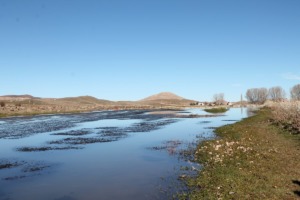This article was recently published in the journal Euro-Mediterranean Journal for Environmental Integration [1]. The article reveals how Earth Observation (EO) tools can be used to pre-identify sites suitable for large-scale wetland restoration. This is achieved through mapping and delineating existing and lost wetland habitats while analyzing their current usage. Furthermore, it provides an estimate of the efforts required to regenerate areas that have undergone alterations or losses.
You can access it on the Tour du Valat web documentary portal [2].

Abstract:
Mediterranean wetlands are the richest and most productive ecosystems in the region, and are essential for climate change adaptation and mitigation. However, despite their importance, they have suffered significant destruction over time. We estimate that half of the natural wetlands have been lost since the 1970s, and the regional trend shows no signs of slowing down. It is therefore urgent to implement concrete solutions that can preserve the remaining wetlands and restore those that have been lost. The increasing availability of free and open Earth Observation (EO) data and tools has provided a basis for mapping these ecosystems and monitoring their status and trends. In this paper, we show how EO-based data and tools can support the pre-identification of candidate sites for wetlands restoration at large scale through the mapping and delineation of existing and lost wetland habitats, their current land use status, and the estimation of the efforts needed to recreate the lost and transformed ones. We used this approach in the Sebou river basin in Morocco and the transboundary Medjerda watershed between Algeria and Tunisia. The resulting products, i.e., Potential Wetland Areas and Potentially Restorable Wetlands maps, enabled the identification of more than 7000 km2 and 1700 km2 of lost wetland habitats that could be regained in the Sebou and Medjerda basins, respectively. These results hold immense value for water resources management and land planning as they can enhance and assist prioritization efforts for wetland restoration at local, national, and regional scales. They can serve as baseline data to identify candidate sites to implement wetland restoration actions as Nature-based Solutions, regenerate their habitats, and restore the ecosystem services they provide to society.
Bibliographical reference: Guelmami, A. Large-scale mapping of existing and lost wetlands: Earth Observation data and tools to support restoration in the Sebou and Medjerda river basins. Euro-Mediterr J Environ Integr (2023). https://doi.org/10.1007/s41207-023-00443-6 [1]